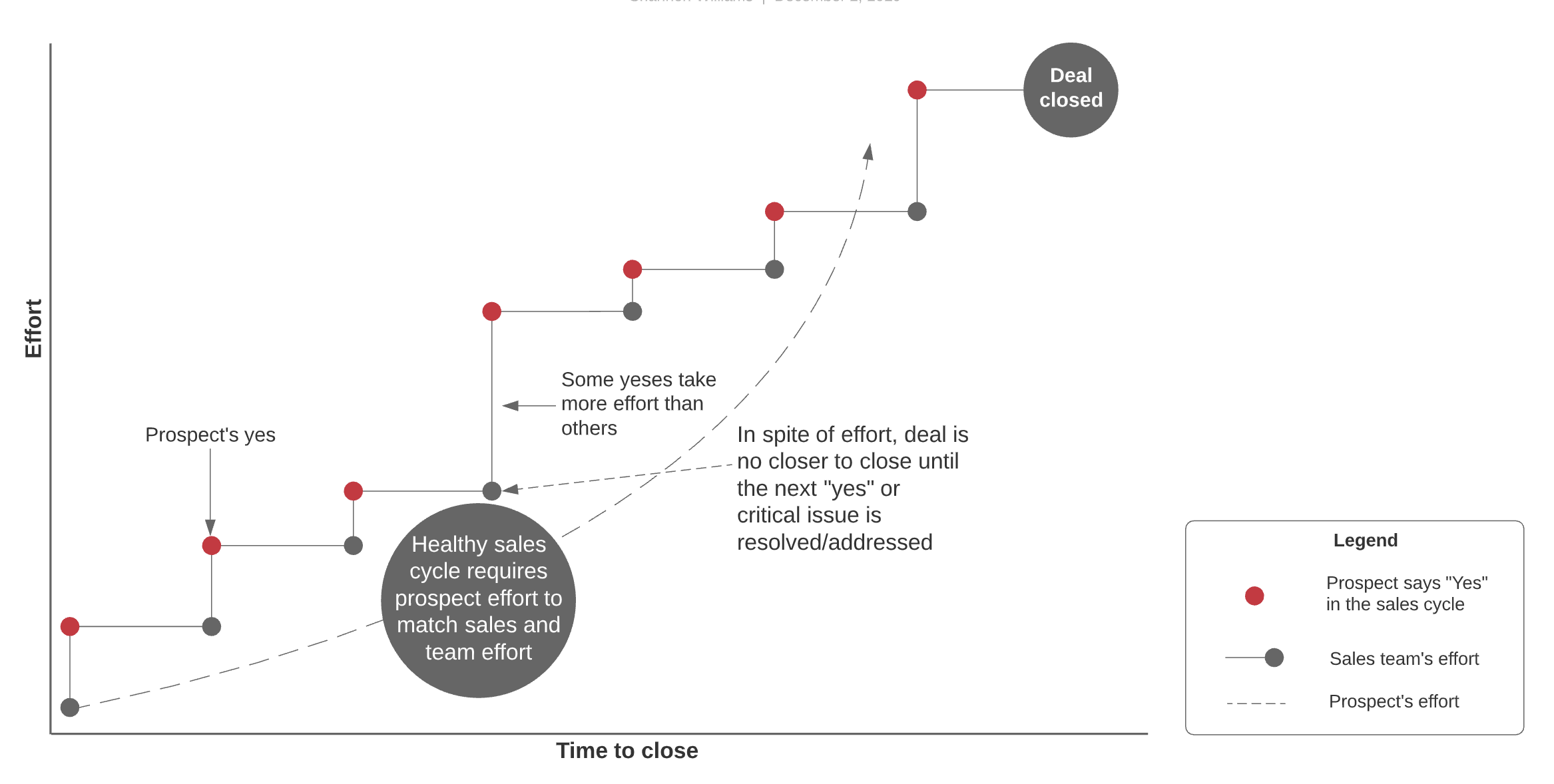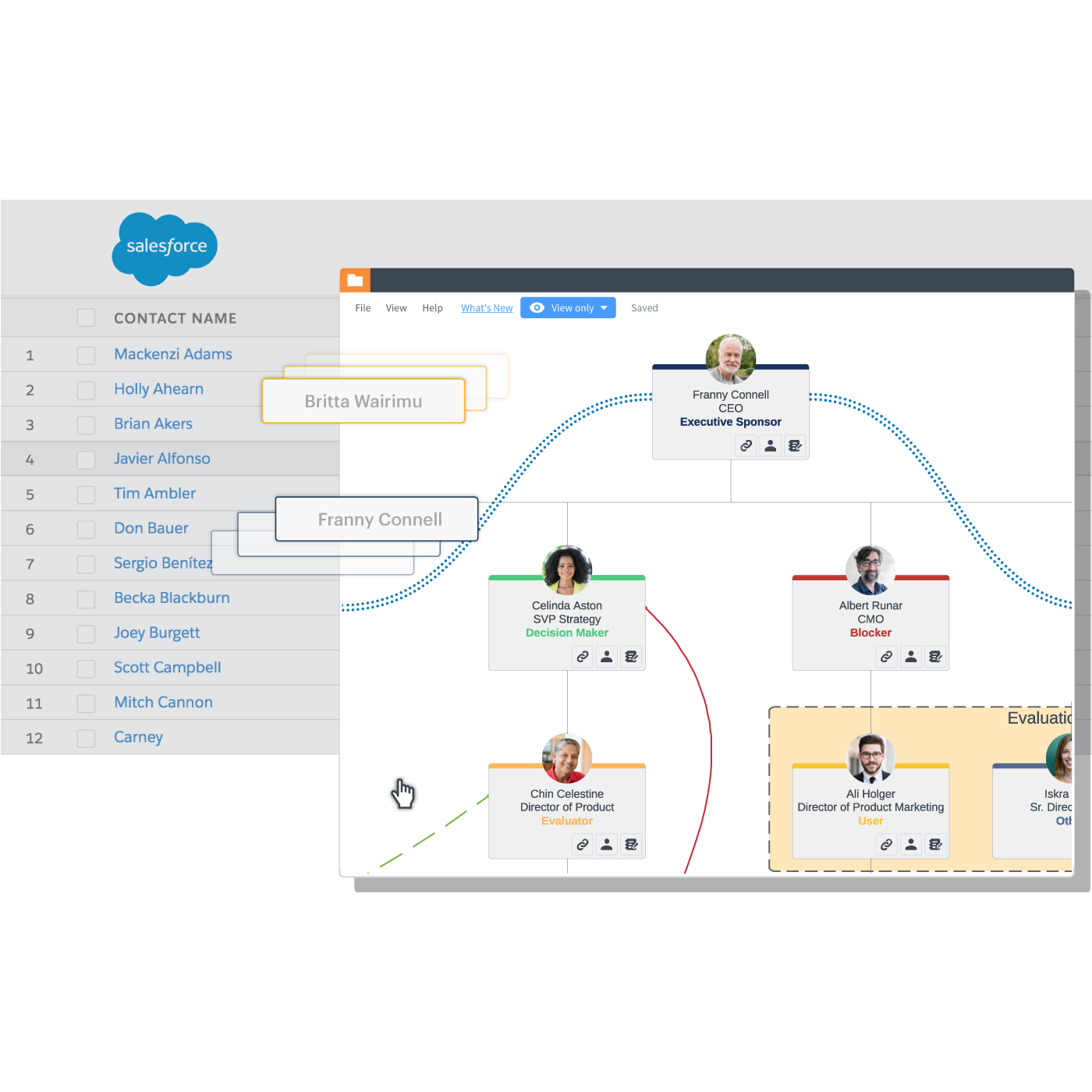When it comes to selling, it’s not about the questions you ask but the information you get.
The job of a salesperson is to influence—but in order to have any real influence, you need the right information. You need to know everything you possibly can about the problems the buyer is struggling with.
That’s why I created the gap selling methodology. It helps reps gather as much information as possible about where the prospect is now, where they want to be, and the reason for the discrepancy between the two—because that gap is at the heart of every sale.
What is gap selling?
As you start working the deal, you need to first and foremost gather information on the prospect’s:
Current state: What is the literal and physical environment of the prospect’s current state? What problems are they struggling with, and how are those problems impacting their organization? How is their current state affecting them emotionally? Gap selling is problem-centric rather than product-centric, so dig deep to try and identify the root cause of the prospect’s problems in this current situation.
Future state: Where does the prospect want to go? What literal and physical environment do they want to create? How would this future state affect them emotionally? Determine what solutions are available that could help them get to this future state.
The gap: How big is the difference between where they are today (current state) and where they want to go (future state)? The bigger the gap, the more value there is in changing (buying a new solution). Determine if the gap is big enough to warrant buying your product or service. What would the cost be in terms of time, money, and effort? Is the cost worth it?
All of this information gathering should be done within the first quarter of the sales process. Without this information, you have no idea what their decision criteria is, where they are trying to go, and why they want to get there. You lack influence, and you can’t create a sense of urgency to encourage their decision-making.

What questions do I need to ask?
I wish I could give you a list that would get you to the right information every single time, but you can’t script these questions. It completely depends upon the situation. What I can tell you is that your questions need to be specific. And they should help you uncover the following:
- Facts
- Problems
- Impact
- Root causes
- Emotion
- Future state
- Solutions
For example, let’s say we are selling Lucidchart. There is a bad question: “What is wrong with your current way of doing things?”
It’s vague.
This is also a bad question: “What is wrong with your current process documentation?”
The prospect might not know they have a problem.
This is a good question: “How are you currently documenting your processes?”
Now you’re specific but not assuming they have a problem. You’re looking to see if YOU can see that they have a problem.
Follow up with something like “Are your processes documented in a way everyone can access them? Could you walk me through what that looks like?”
You’re understanding their future state and able to start identifying potential problems.
Let’s say the prospect documents processes in Google Drive. Now you can ask, “What happens when the person creating this documentation leaves the company?”
And now the prospect is thinking. They remember the knowledge and mental sanity that was lost when Sally from sales ops left the company very suddenly and took her documentation with her. You can dig into the problem together and determine what the impact is and what it is costing them.
Next you dive into what they want the future state to look like, which might be 100% process adherence or a new central repository for documentation. What’s the gap? What will it take to fill it? Identify how your solution can close the gap.
Here’s another example of gap selling. I partnered with Lucidchart to create this visual outlining what gap selling looks like as it relates to selling a car (click to customize for your own sale):

What are the benefits?
I’m not going to mince words here—gap selling is very hard.
But it’s worth the reward. There’s no other methodology out there that maps to the decision and change processes like this one does. It allows you to sell the way we buy, which is incredibly powerful and effective.
When executed correctly, gap selling leads to:
- Relationships built upon credibility rather than likeability
- Shorter sales cycles
- Higher average selling price
- Increased overall revenue
- Less time wasted on deals that will never close
- Better forecasting
By staying in problem-centric mode, you can discover the information you need to break through the noise of endless sales pitches and close the gap your customer might not even realize exists.

See how Lucidchart strengthens any sales methodology, creating adherence and uniformity across your org.
Learn moreAbout the author

Keenan is A Sales Guy Inc’s CEO/President and Chief Antagonist. He’s been selling something to someone for his entire life. He’s been teaching and coaching almost as long. With over 20 years of sales experience, which he’ll tell you he doesn’t give a shit about, Keenan has been influencing, learning from, and shaping the world of sales for a long time. Finder of the elephant in the room, Keenan calls it as he sees it and lets nothing or no one go unnoticed.
About Lucidchart
Lucidchart, a cloud-based intelligent diagramming application, is a core component of Lucid Software's Visual Collaboration Suite. This intuitive, cloud-based solution empowers teams to collaborate in real-time to build flowcharts, mockups, UML diagrams, customer journey maps, and more. Lucidchart propels teams forward to build the future faster. Lucid is proud to serve top businesses around the world, including customers such as Google, GE, and NBC Universal, and 99% of the Fortune 500. Lucid partners with industry leaders, including Google, Atlassian, and Microsoft. Since its founding, Lucid has received numerous awards for its products, business, and workplace culture. For more information, visit lucidchart.com.

